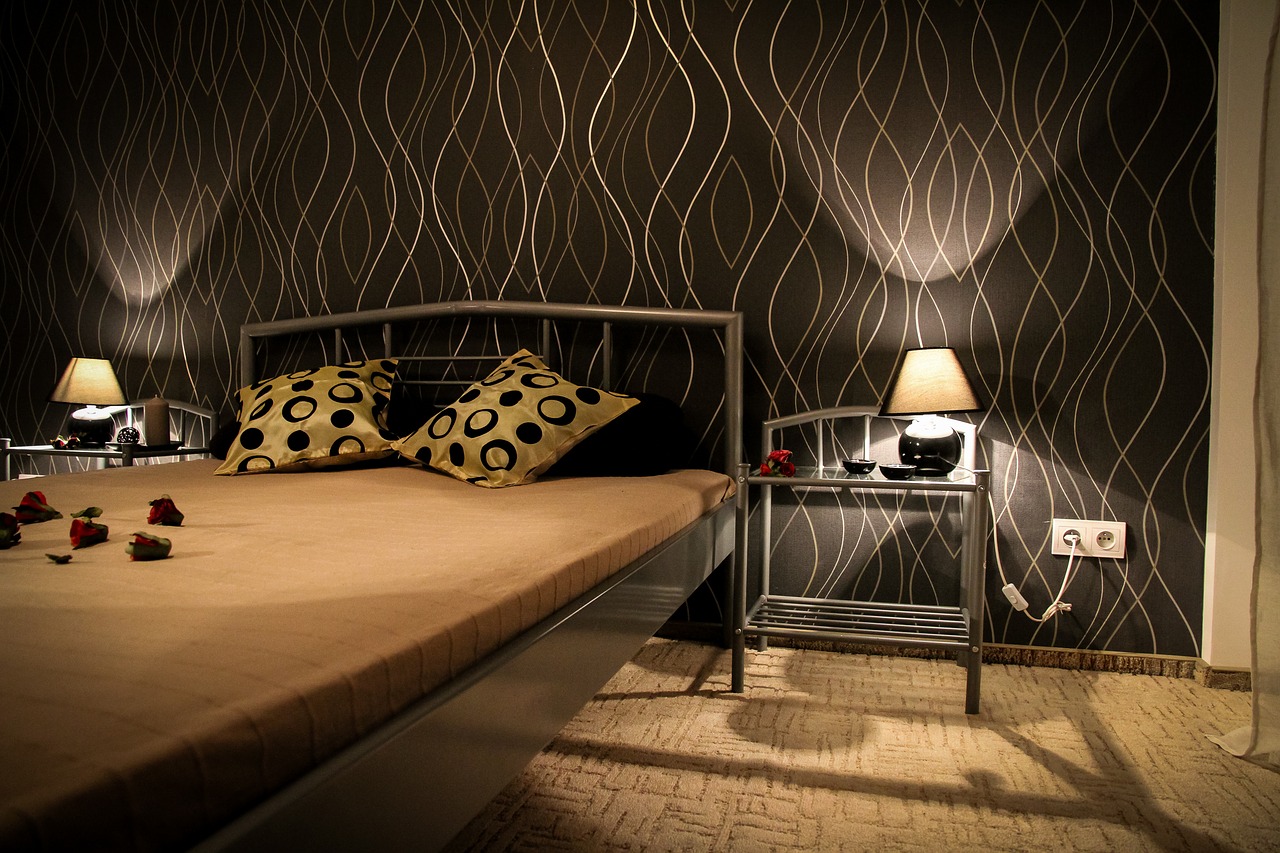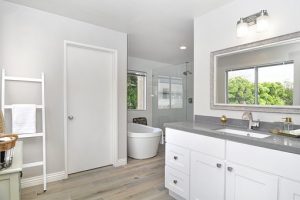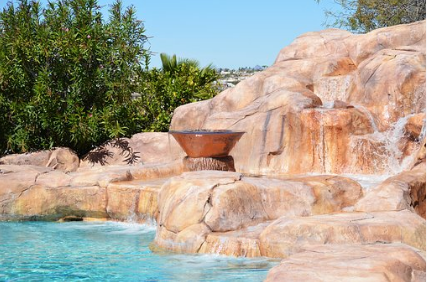A Foolproof Guide to House Renovation Budgeting
Sticking to a budget is always a challenge. Creating a budget for a large project of home remodel you’ve never done before is an even bigger challenge. When it comes to home renovation costs, building a feasible budget requires a detailed plan and plenty of research.
Fortunately, we’ve done most of the leg work for you. Simply follow the steps below to create a remodelling budget that will keep you from overspending on your next renovation.
How Much Does It Cost to Remodel a House?
According to HomeAdvisor, the average cost of renovating a home that is less than 1,000 square feet is $18,347. For homes in the 3,000 to 4,000 square foot range, the average cost climbs to $36,121. Renovations made to an older home tend to cost more than a newer one, especially if the wiring, plumbing and other features aren’t up to code.
Typically, you can expect to spend at least $100 to $200 per square foot on any renovation.
When you’re deciding on your home renovation budget, it can be easier, and more affordable, to prioritize projects by room and build a budget around the cost of each individual project.
How Much Should I Spend on a Home Renovation?
To get an approximate idea of what your remodeling budget should be, consider the value of your home as a whole. You don’t want to spend more than 10 to 15 percent of your home’s value on a single room. If you spend more, the value of the renovation will not proportionally add to the value of your home.
For example, if your home is worth $100,000, the maximum you should spend on a kitchen or bathroom renovation is $15,000. If your house is worth more, the spend on a renovation could be higher
Prioritize Remodeling Needs
The easiest way to stay on budget during a renovation is to know exactly what you want. Create a list of everything you would like the project to include and then separate items into wants and needs.
Use resources like HomeAdvisor to estimate labor costs for engineers, architects, plumbers and handymen. Labor usually accounts for 20 to 35 percent of a project’s budget. Choose fixtures and finishes and calculate what you will spend on them. Include paint, knobs, faucets, tile, flooring and anything else you’ll need. Don’t forget to include taxes and shipping costs in the estimates for your materials.
Include the appliances you want and what you expect to spend on them. Include costs for installation, delivery and how you plan to dispose of appliances.
Consider what living expenses you will incur during your project. Consider the costs for living without a functioning kitchen, boarding pets or staying outside the home during your project and include these costs in your spreadsheet.…






 Expertise should be the number one factor to consider when choosing a home remodeling company. A reliable team of remodeling contractors should not only be competent in their craft but experts in it. Remember that home remodeler are only experts in whatever they do after completing numerous projects and many years of experience under their belt. For a company to be considered to have expertise in home remodeling, that is a powerful marketing tool they can ever have.
Expertise should be the number one factor to consider when choosing a home remodeling company. A reliable team of remodeling contractors should not only be competent in their craft but experts in it. Remember that home remodeler are only experts in whatever they do after completing numerous projects and many years of experience under their belt. For a company to be considered to have expertise in home remodeling, that is a powerful marketing tool they can ever have. No matter the industry you are in, a company’s reputation is everything. It does not matter what the company claims on its website, commercials, or ads, what other people are saying regarding their services is more important. Nowadays, it is easy to know what others are saying about their work and business. Ideally, a reputable home remodeling company should have many positive testimonials and reviews from past customers.…
No matter the industry you are in, a company’s reputation is everything. It does not matter what the company claims on its website, commercials, or ads, what other people are saying regarding their services is more important. Nowadays, it is easy to know what others are saying about their work and business. Ideally, a reputable home remodeling company should have many positive testimonials and reviews from past customers.…



 rises through the walls. Two structural deficiencies mainly cause this problem. It could be that the walls do not adequate damp proof installed or the existing damp proof is somehow damaged. How do you know whether you have rising damp? Whenever you notice your skirting boards/floorboards are damaged, crumbling plasters, paint peeling from the walls or some tidemarks on the walls.
rises through the walls. Two structural deficiencies mainly cause this problem. It could be that the walls do not adequate damp proof installed or the existing damp proof is somehow damaged. How do you know whether you have rising damp? Whenever you notice your skirting boards/floorboards are damaged, crumbling plasters, paint peeling from the walls or some tidemarks on the walls. walls. This damp problem occurs when damp or water moves horizontally from outside in. This damp issue often appears on the walls and the ceilings. Defective or missing flashing causes this damp on the roof, poor gutters, poorly done brickwork, or damaged renders. Discoloured walls, bad musty smell, black mold are some of the visible signs that could be indicative of penetrating dampness.
walls. This damp problem occurs when damp or water moves horizontally from outside in. This damp issue often appears on the walls and the ceilings. Defective or missing flashing causes this damp on the roof, poor gutters, poorly done brickwork, or damaged renders. Discoloured walls, bad musty smell, black mold are some of the visible signs that could be indicative of penetrating dampness.
 One of the advantages of the stamped concrete is that it is easy to maintain it when compared to the other alternatives. When used in the other materials are used in the pavements, for example, the materials typically become loose.
One of the advantages of the stamped concrete is that it is easy to maintain it when compared to the other alternatives. When used in the other materials are used in the pavements, for example, the materials typically become loose. If you want to sell any property, it is recommended that you renovate it first. By doing so that it will become more appealing thereby attracting clients.
If you want to sell any property, it is recommended that you renovate it first. By doing so that it will become more appealing thereby attracting clients.
 So how do you ensure that you have the right shower heads for your bathroom? Well, that is very simple. First, you need to understand that shower heads have become very fashionable nowadays. So if you have other types of showerheads in your shower room, you need to consider undertaking a renovation. The fact that they are now fashionable means that their prices tend to be a bit higher. Here are the things that you should look at whenever you want to buy most current and top rated showerheads.
So how do you ensure that you have the right shower heads for your bathroom? Well, that is very simple. First, you need to understand that shower heads have become very fashionable nowadays. So if you have other types of showerheads in your shower room, you need to consider undertaking a renovation. The fact that they are now fashionable means that their prices tend to be a bit higher. Here are the things that you should look at whenever you want to buy most current and top rated showerheads. Finding the best rain shower for you bathroom demands that you spend a good pie of your money. You need to understand that you will always get what you pay for. This means that if you pay cheap, be sure to get cheap products. However it is good to get note of the fact that this is not always the case.…
Finding the best rain shower for you bathroom demands that you spend a good pie of your money. You need to understand that you will always get what you pay for. This means that if you pay cheap, be sure to get cheap products. However it is good to get note of the fact that this is not always the case.…

 In most homes, these areas are usually left unused. However, you can use these areas to hand mirrors and pictures instead. With such attractions, your eyes will be naturally drawn into these spaces. This is one way of getting the best from your room. Of course, the reflective property of mirrors is an excellent way of enhancing the aesthetics of your home.
In most homes, these areas are usually left unused. However, you can use these areas to hand mirrors and pictures instead. With such attractions, your eyes will be naturally drawn into these spaces. This is one way of getting the best from your room. Of course, the reflective property of mirrors is an excellent way of enhancing the aesthetics of your home.